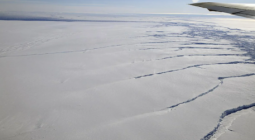Antarctic visitors threaten world’s largest remaining wilderness

Visitors bring in foreign species that colonise ground exposed by rapidly melting glaciers
The first Airbus A340 landed in Antarctica recently using an immense 10,000ft runway carved out of ice, designed to take tourist flights each carrying up to 380 passengers. Increasing numbers of visitors are threatening the fragile Antarctic environment.
Antarctica is largely isolated by the Southern Ocean, with the strongest ocean current on Earth, fierce surface winds, icy air and cold seas. Unique life forms have evolved to cope with the frigid climate. But as the global climate heats, so much of the continent is changing. The Antarctic peninsula is one of the fastest heating regions of the world, and glaciers are melting and exposing bare ground.
Newly exposed grounds have begun to be colonised by invasive species as visitors unwittingly bring in foreign seeds, spores and microbes on their clothes and equipment.
One particularly aggressive invader is the annual meadowgrass, widespread in many parts of the world, which has colonised ice-free areas left behind by retreating glaciers in Antarctica. Foreign wildlife has also become established, including 11 invertebrate species, such as springtails, mites, a midge and an earthworm. These are all worrying signs of rapid changes in Antarctica, the world’s largest remaining wilderness.




